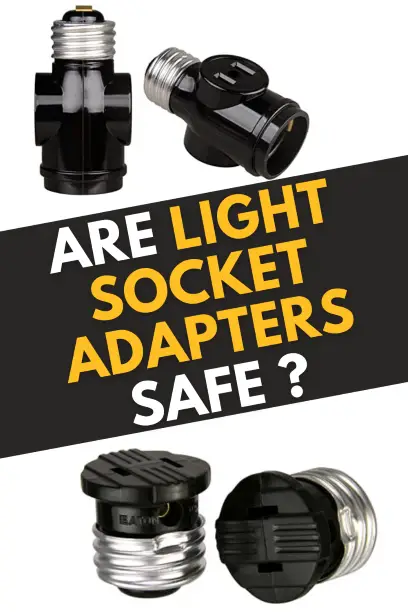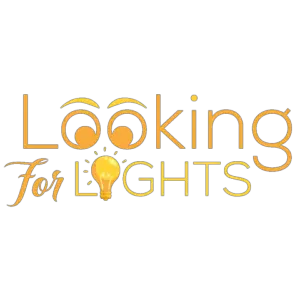Light socket adapters are convenient to have when you are looking for a temporary solution for your lighting needs. They are quite similar to the plugs we have on walls as they also come with two conductive strips and a ground. However, similar to most electrical objects, there is also the risk of electrocution and fire.
The answer to this question “Are light socket adapters safe”? is a ‘Yes’. They are safe but there are a few variables to consider. When used incorrectly, it can become a serious fire hazard or end up electrocuting.
To understand how to use light socket adapters properly, it is important to know all the risks involved. Let’s take a dive into the world of light adapters to find out the right and wrong way to use them.
Table of Contents
What is a Light Socket Adapter?
Light socket adapters can be regarded as interim sockets for fitting light bulbs in sockets having variable sizes. They enable fixtures to accommodate all sizes of bulbs. This implies that with the help of a light socket adapter, you can fit a bulb inside a fixture socket that has a size different from that of the light bulb. Socket reducers are those socket adapters that help in the accommodation of smaller bulbs. Socket enlargers enable the fitting of larger bulbs.
Are Light Socket Adapters Safe?

Yes, light socket adapters are safe as long as they are used correctly and in a more temporary capacity than a permanent one. If you need it to plug in Christmas lights or something similar, it will be fine to use but plugging in anything that exceeds its capacity can become quite dangerous. So never plug in your air conditioner or a hairdryer into it.
It is also extremely important to note that you should never use any old light socket adapters where the plug hangs half out. If you do so, not only will it be a serious fire hazard but you might also end up getting electrocuted badly.
Light socket adapters are rated for 60W and 100W at most. Hence their capacity is low and should be used only for plugging in appliances or lights that don’t have a heavy load. LED lights are good to use though as they have very low power consumption but using incandescent or halogen lights might not be a good idea.
Does this mean that you can’t use anything other than LED lights? You can, as some even use their sump pumps with it but there are many potential dangers in doing so. It’s usually safe to mildly overload devices but there is a limit. Once you cross its limit, it will either melt or get overheated and cause a fire hazard.
How to Use it safely?
Always make sure that you don’t overload the light bulb socket and that you don’t plug in anything that needs to be constantly ON. If you want to use a light socket adapter to hang lights on your roof, then you need to first figure out if anything else is on the same circuit and the size of the breaker. You also need to check out the size of the wire used inside the light. Then determine the current capacity of the wire and make sure you don’t cross that limit.
Before you buy any light socket adapters, always make sure you buy only high-quality ones from a reputed manufacturer. It might be tempting to buy cheap ones especially if you plan to use them sparingly, however, you will be taking on a lot of unnecessary risks. These cheap adapters may come with low-quality parts that may end up getting melted or producing spark which in turn might lead to a home fire. Saving a dollar or two is not worth the risk of having your home destroyed.
Choose the Right Light Bulb Sockets
With a range of sockets available in the market, it is important to choose the right one in order to suit your needs. Let’s look at the different types of bulb sockets, their features, and utility.
| Light Socket Adapter | Description |
|---|---|
| 4 Pin T9 | This type of bulb socket has four pins for supporting T9 circular bulbs. It is generally used in ceiling fans and ceiling fixtures. |
| BA15d | The ‘d’ stands for double points of contact in this bulb socket. It is used for replacing automobile lightings, headlights, and school bus lightings. |
| BA15s | BA signifies a bayonet base. The ‘s’ stands for the single point of contact in this type of socket. It is used for replacing automobile lighting and headlights. |
| E12 | The candelabra base type is designed to support flame-tipped, globe-shaped, and blunt-tipped fixtures. It is usually used in chandeliers, wall sconces, and some kinds of bath bars. |
| E17 | E17 is also known as an intermediate Edison screw that screws inside the light sockets. Main areas of utility are indicators for toys, exit signs, holiday decorations, and so on. |
| E26 | This type of Edison bulb socket is used in table lamps, household fixtures, and desk lamps. It is a medium base type and hence can be used for a variety of bulbs. |
| E39 | Also called mogul base, this type of bulb socket is rarely used besides commercial lightings, street lightings, and high wattage lamps. This bulb socket can handle as much heat as generated by a 300-watt bulb. |
| GU24 | GU24 base type is mainly used in household and construction lightings. It has a two-pin connector and a twist and lock design to ensure bulb safety. It can be used to fit compact fluorescent light bulbs (CFLs) and LED lamps as well. |
| GU10 | It has a pair of pins that are located 10 millimeters apart from each other. It is a twist and lock type of base. Being a replacement of the GU-110 halogen base, it works on the same voltage. GU10 is generally used in bath bars, ceiling fans, and track lightings. |
| GU5.3 | This type of bulb socket is used in track lighting heads, bath bars, and ceiling fans. To ensure proper functionality of this base type with transformers, use an LED MR-16. |
| GU4 | GU4 base type is used in floodlights. It provides extra protection to the bulb as it has two grooves on both sides for the clips to hold the bulb more firmly. |
| G24 | G24 has a large industrial and commercial importance as it is compatible with 2 and 4 pin sockets such as G24d, GX24d, G24q, and GGX24q. The main areas of use are industrial lighting, commercial lighting, and ceiling reflectors. |
| G13 | G13 is a type of medium bi-pin base. 13 in the name stands for the distance between the two pins. It is mostly used for T8, T10, and T12 fluorescent tubes. This type of socket finds its use in warehouses, gyms, garages, and factories. |
| G4 | It is a kind of bi-pin base and used in cabinet lightings, decorative lightings, task lightings, and landscape lighting. The halogen version of this bulb base type utilizes only 20-watt power but releases a lot of heat. |
| G24Q | There are mainly three variants of the G24Q base type, namely G24Q1, G24Q2, and G24Q3. G24Q1 is employed in bulbs of power 10 and 13 watts. G24Q2 is used in the case of 18 watts bulbs. G24Q3 is used in 26-watt bulbs. |
| Medium Bi-Pin | It derives its name from the set of two pins located on the side of its base. This base type is generally found in fluorescent bulbs and used in LED linear high bays. The main areas of its utility are warehouses, gyms, and factories. |
A Few Cautions when Using Light Socket Adapters
Here are a few ways in which you might use a light socket adapter incorrectly. The potential risks that come with it are not to be underestimated or scoffed at.
- Overloading It – While some might say that there is an inherent risk to using all electrical objects, it is unwise to equate that to the use of light socket adapters. When you use them, you are limited to the capability of the adapter itself. One of the biggest mistakes people make when using a light socket adapter is overloading it by plugging in a device of a higher capacity.
- Not Grounded Properly – It would be quite unwise to use a 3-prong to 2-prong adapter unless the small wire hanging from it is grounded. This is extremely important to note. Your device will work even if it isn’t grounded but you run a high risk of getting electrocuted badly when you do so. So if you do plan to use a 3-prong to a 2-prong adapter, always make sure the wire is connected to a grounded screw.
How to Calculate Electrical Circuit Load Capacity?
Understanding how to calculate electrical load capacity is very important to safely use electrical devices. Here is a simple way to do just that.
- Volts x Amps = Watts is one formula you need to know.
- Always make sure that the load never exceeds more than 80 percent of the electrical capacity.
- So if you have a 20 amp, 120-volt branch circuit, then the total load capacity is 2400 watts. So if you consider the 80 percent rule, then the ideal load capacity would be 1920 watts. Anything more than that might pose a risk.
Finding out the wattage of light bulbs and other appliances is very easy as most of them will have it on display on their body. Then it’s just a matter of adding it all up to figure out if you have hit your limit. Do note that you shouldn’t just add up the wattage of all your electrical devices as not all of them will be running at the same time.
How to Calculate the Ideal Load of Your Home?
- Add the wattage capacity of all the lighting circuits.
- Add the wattage of all plug-in outlet circuits.
- Add the wattage of all permanent appliances but when it comes to appliances that you will run separately like a space heater and an air conditioner, only count the one with the highest rating.
- Subtract the total wattage counted so far by 10,000.
- Then take the resulting number and multiply it by 0.40.
- Next, add 10,000 to the number you got and then divide it by 240.
The final number you get will be the total amount of amperes required to power your home. Using the above, you can also figure out whether your current electrical service is above or below your requirements.
Conclusion
Light socket adapter are safe as long as you use them correctly. Use the right type of adapter for what you need it for and don’t overload the system. I’ve provided all the information you need to make sure this is all correct.
If you are unsure of using a light socket adapter, the first thing you should do is contact the professional electrician in your area. If not, you can also get in touch with an electrical inspector or an electrical engineer. They will be able to let you know exactly what all you can safely plug into it and how to use the light socket adapter properly.

